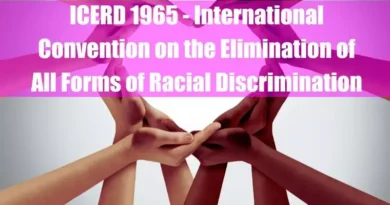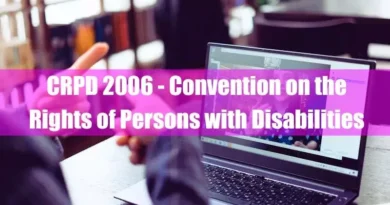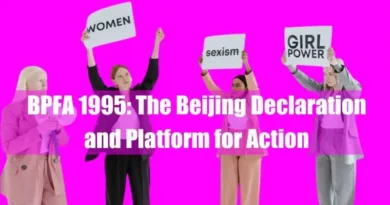I. Introduction
The International Labour Organization (ILO) is a specialized agency of the United Nations established in 1919. It emerged from believing that lasting peace can only be built on social justice. The ILO’s core purpose is to promote decent work for all women and men. This translates to fair employment opportunities, adequate working conditions, and social protection for workers.
The ILO boasts a unique tripartite structure, bringing together governments, employers, and workers’ organizations from its 187 member states. This tripartite approach ensures that international labor standards reflect the perspectives of all stakeholders involved in the world of work.
Over its century, the ILO has played a pivotal role in shaping global labor standards and promoting social progress. It has spearheaded the adoption of numerous international conventions and recommendations, fostered dialogue on critical labor issues, and provided technical assistance to member states in implementing these standards.
ILO Conventions are legally binding international treaties that set minimum standards for various labor issues. These standards encompass fundamental rights, employment conditions, social protection, and workplace safety and health. Conventions are not self-executing—member states must formally ratify them to incorporate them into national legislation.
Governments commit to upholding these standards by ratifying Conventions and reporting their implementation efforts to the ILO. ILO Conventions are crucial in establishing a global framework for decent work and promoting fair working conditions for all.
II. Core Categories of ILO Conventions

ILO Conventions address many labor issues, but some key categories form the foundation for decent work. These core categories can be broadly divided into two groups:
A. Fundamental Rights at Work
These four foundational Conventions are essential for ensuring basic human rights in the workplace. They are often referred to as the “ILO Declaration of Fundamental Principles and Rights at Work”:
1. Freedom of Association and Collective Bargaining (Conventions No. 87 & 98):
These Conventions guarantee workers’ rights to form and join trade unions, bargain collectively with employers, and engage in peaceful protest actions. Strong worker organizations are crucial for promoting decent work conditions and ensuring a voice for workers in the workplace.
2. Elimination of Forced Labour (Conventions No. 29 & 105):
These Conventions aim to eradicate all forms of forced labor, including human trafficking, slavery, and debt bondage. Forced labor exploits individuals and denies them basic human rights.
3. Abolition of Child Labour (Conventions No. 138 & 182):
The ILO works towards the complete eradication of child labor. Convention 182 specifically targets the worst forms of child labor for immediate elimination. Convention 138 sets a framework for progressively eliminating all child labor. Child labor deprives children of their education and exposes them to dangerous working conditions.
4. Non-discrimination in Employment and Occupation (Convention No. 111):
This Convention prohibits discrimination in employment and occupation based on race, color, sex, religion, political opinion, national extraction, or social origin. It promotes equal opportunities and treatment for all workers.
Also, read:
- UDHR – Universal Declaration of Human Rights (1948)
- CEDAW 1979 – Convention on the Elimination of All Forms of Discrimination Against Women
- ICESCR 1966 – International Covenant on Economic, Social, and Cultural Rights
- ICERD 1965 – International Convention on the Elimination of All Forms of Racial Discrimination
B. Employment Conditions and Protection
These Conventions address specific aspects of the employment relationship, aiming to ensure fair treatment and protection for workers:
1. Wages and Minimum Wage Setting (Conventions No. 131 & 135):
These Conventions promote fair wages and encourage establishing minimum wage systems to ensure workers earn enough to meet basic needs.
2. Hours of Work and Rest Periods (Conventions No. 1 & 37):
These Conventions regulate working hours and mandate rest periods to prevent worker fatigue and ensure adequate time for rest and leisure.
3. Occupational Safety and Health (OSH) (Convention No. 155):
This Convention establishes a framework for protecting workers’ workplace safety and health. It promotes preventive measures to minimize workplace hazards and ensure a safe working environment.
4. Maternity Protection and Parental Leave (Conventions No. 3 & 183):
These Conventions guarantee women’s rights to maternity protection, including paid leave and job security before and after childbirth. Additionally, some Conventions promote parental leave policies for both mothers and fathers.
Also, read:
- DEVAW 1993 – Declaration on the Elimination of Violence against Women
- BPFA 1995: The Beijing Declaration and Platform for Action
- CRPD 2006 – Convention on the Rights of Persons with Disabilities
- GINA – Genetic Information Non-discrimination Act 2008
III. The Process of Developing and Ratifying ILO Conventions

The development and implementation of ILO Conventions involve a multi-step process with key roles for the ILO and member states.
A. Standard-Setting Process at the ILO
1. Initiation and Consideration of Proposals:
The process begins with identifying an emerging labor issue requiring international standards. Proposals for new Conventions can be submitted by member states, employers’ and workers’ organizations, or the Governing Body of the ILO.
2. Tripartite Committee Discussions and Drafting:
Once a proposal is selected, a technical committee of government, employer, and worker representatives from member states is established. This committee researches the issue, gathers information, and drafts a preliminary text for the Convention.
3. Adoption by the International Labour Conference:
The draft Convention is then presented for discussion and adoption at the annual International Labour Conference (ILC). The ILC is a tripartite body where government, employer, and worker delegates from member states vote on the final text of the Convention. A two-thirds majority vote is required for adoption.
Also, read:
- VDPA 1993: Vienna Declaration and Programme of Action
- ICCPR 1966 – International Covenant on Civil and Political Rights
- CRC 1989 – Convention on the Rights of the Child
B. Ratification by Member States
1. National Procedures and Legal Integration:
Following adoption at the ILC, member states have one year to submit the Convention to their “competent authority” (usually the national parliament) for consideration of ratification. National procedures for ratification vary by country and may involve parliamentary debates and approvals. Once ratified, the Convention becomes legally binding for the ratifying state, and its provisions must be incorporated into national legislation or existing regulations.
2. Obligations and Reporting Requirements:
Ratified Conventions require member states to take concrete steps to implement their provisions. This includes:
- Enacting or amending national laws and regulations to comply with the standards set by the Convention.
- Establishing enforcement mechanisms to ensure adherence to the Convention’s provisions.
- Submitting regular reports to the ILO on the measures taken to implement the Convention and any challenges encountered.
3. Monitoring and Implementation Mechanisms:
The ILO has established supervisory mechanisms to monitor the application of Conventions. The Committee of Experts on the Application of Conventions and Recommendations (CEACR) examines member states’ reports and identifies non-compliance areas. Additionally, complaint procedures allow workers’ or employers’ organizations to allege violations of ratified Conventions.
Also, read:
- Explaining Quid Pro Quo Harassment Under Title IX
- Quid Pro Quo Harassment: What It Is? Know Everything
- Quid Pro Quo and Hostile Work Environment
IV. Key Challenges and Considerations in Implementing ILO Conventions

Transforming the principles enshrined in ILO Conventions into tangible improvements for workers on the ground presents various challenges. Here’s a closer look at some key obstacles and how they are addressed:
A. Adapting Conventions to National Contexts
1. Economic Development Levels and Resource Constraints:
Developing countries may need help implementing certain Conventions due to limited resources and competing priorities. The ILO recognizes these disparities and offers technical assistance programs to help countries build capacity and meet their obligations.
2. Cultural and Social Differences:
Cultural norms and traditional practices can sometimes clash with Convention provisions. The ILO encourages flexibility in implementation, allowing for culturally sensitive approaches that still achieve the Convention’s core objectives.
3. Domestic Legislation and Enforcement Capacity:
Even with strong national legislation aligning with Conventions, enforcement remains crucial. Weak enforcement mechanisms or lack of resources for inspections can hinder effective implementation. The ILO works with member states to strengthen their legal frameworks and build enforcement capacity.
B. Ensuring Compliance and Addressing Violations
1. The Role of the Committee of Experts on the Application of Conventions and Recommendations (CEACR):
This independent committee, composed of legal experts, reviews reports submitted by member states and identifies areas of non-compliance with ratified Conventions. The CEACR engages in a constructive dialogue with governments, providing recommendations and technical assistance to address identified shortcomings.
2. Complaints Procedures and Investigation Mechanisms:
Worker or employer organizations can lodge complaints with the ILO alleging violations of ratified Conventions. A tripartite body reviews these complaints, which can initiate investigations and recommend remedial action.
3. Technical Assistance and Capacity Building Programs:
The ILO offers various technical assistance programs to support member states in implementing Conventions effectively. These can include training for labor inspectors, providing guidance on developing national legislation, and promoting social dialogue between governments, employers, and workers.
V. The Impact and Effectiveness of ILO Conventions

ILO Conventions have played a significant role in shaping the global landscape of work. Here’s a breakdown of their contributions and the ongoing challenges:
A. Positive Contributions to Global Labour Standards
1. Promoting Decent Work and Fair Labour Practices:
Conventions establish minimum standards for working conditions, wages, and social protection. This creates a foundation for “decent work” – productive work, provides fair remuneration, and ensures safety and security for workers. By raising the floor for labor standards globally, Conventions promote fairer practices across countries.
2. Protecting Workers’ Rights and Reducing Abuses:
Fundamental rights Conventions, like those on freedom of association and elimination of forced labor, directly address worker exploitation and empower individuals. They provide a framework for national laws that protect workers from abuse and exploitation.
3. Enhancing Social Dialogue and Industrial Relations:
The ILO’s tripartite nature and emphasis on social dialogue foster better communication and cooperation between governments, employers, and workers. Conventions often serve as a reference point for social dialogue, promoting agreements that benefit workers and businesses.
B. Limitations and Ongoing Challenges
1. Uneven Rates of Ratification and Implementation:
Not all countries have ratified all core Conventions, and even among those who have, the level of implementation varies considerably. This creates a gap between the ideals enshrined in Conventions and the reality for many workers worldwide.
2. Enforcement Challenges and Lack of Sanctions:
Effective enforcement mechanisms are crucial for ensuring compliance. Resource constraints, weak legal frameworks, and lack of political will can hinder implementation. The ILO lacks the authority to impose sanctions on non-compliant states, limiting its ability to enforce Conventions directly.
3. Need for Continuous Review and Updating of Conventions:
The world of work is constantly evolving. Existing Conventions need to be reviewed and updated to address emerging challenges, like the rise of informal work or the impact of technological advancements on labor practices.
While ILO Conventions have demonstrably improved global labor standards, their effectiveness can be complex. This section highlighted their contributions, but some sources might offer a more critical assessment regarding uneven implementation or challenges in adapting to a changing work environment, such as:
- ILO Conventions are international treaties setting minimum standards for various labor issues. They aim to promote decent work for all by addressing fundamental rights, working conditions, social protection, and workplace safety.
- Effectiveness: Conventions have significantly improved global labor standards. However, challenges remain, including uneven ratification and implementation, enforcement difficulties, and adapting to a changing work environment.
Also, read:
- Fair Housing Act (FHA) of 1968
- How to Create an Anti-Harassment Policy: 9 Effective Steps
- How to Create an Effective Anti-Harassment Policy Under Title IX.
VI. The Future of ILO Conventions in a Globalized World
The global labor market is undergoing significant transformations, and ILO Conventions must adapt to remain relevant. Here’s a look at emerging trends and how the ILO can address them:
A. Emerging Trends in the Global Labour Market
1. Rise of Informal Economy and Precarious Work:
A growing share of the workforce operates in the informal economy, often with limited rights and protection. Conventions must address informal sector workers’ specific challenges, promoting their transition into formal employment with decent working conditions.
2. Technological Advancements and Automation:
Automation and technological advancements are changing the nature of work. While some jobs disappear, new ones emerge. The ILO needs to consider the impact of these changes on skills gaps, training needs, and potential job displacement. Conventions must address issues like the right to disconnect and the responsible use of technology in the workplace.
3. Global Supply Chains and Cross-Border Labour Issues:
The global nature of production and supply chains presents challenges in ensuring fair labor practices. The ILO must continue promoting international cooperation and developing standards that ensure decent work for all workers, regardless of where they are in the supply chain.
B. Adapting the ILO Convention Framework
1. Developing New Conventions for Emerging Issues:
The ILO should continuously review emerging labor market trends and consider developing new Conventions to address them. This could include topics like platform work, digital rights in the workplace, and the impact of climate change on jobs and livelihoods.
2. Promoting Coherence with Other International Labour Instruments:
The ILO works alongside other international organizations on labor issues. Ensuring coherence and complementarity between ILO Conventions and other relevant international instruments is crucial for strengthening the global regulatory framework for decent work.
3. Strengthening Monitoring and Follow-up Mechanisms:
Effective monitoring and follow-up mechanisms are essential to assessing the impact of Conventions, identifying gaps in implementation, and holding governments accountable. The ILO can explore ways to strengthen these mechanisms, including greater involvement of social partners and civil society organizations.
Also, read:
- Clarifying Consent in Professional Environments
- Understanding Unwanted Advances
- Explaining Sexual Favors Considering Harassment
- Understanding Power Dynamics
VII. Regional and Subregional Dimensions of ILO Conventions
The global landscape of labor standards and practices exhibits significant regional variations. Examining these variations and the role of regional actors provides insights into implementing ILO Conventions.
A. Regional Variations in Labour Standards and Practices
1. Developed vs. Developing Countries:
Developed countries generally have stronger labor standards and more robust enforcement mechanisms than developing countries. This reflects economic development levels, legal frameworks, and institutional capacity differences.
2. Specific Challenges in Different Regions:
Each region faces unique challenges in implementing ILO Conventions. For example, Africa grapples with widespread informality and child labor. At the same time, Asia confronts issues like migrant worker exploitation and long working hours.
3. The Role of Regional Labour Organizations:
Regional labor organizations are crucial in promoting and harmonizing labor standards within their regions. They provide a platform for sharing knowledge, capacity building, and collective action on common challenges in the labor market. Examples include the Arab Labour Organization (ALO) and the Organisation of American States (OAS).
B. Regional Initiatives in Promoting ILO Conventions
1. Harmonization of Labour Standards at the Regional Level:
Regional organizations can work towards harmonizing labor standards within their regions, potentially leading to a higher baseline for worker protection. This can be achieved through developing regional labor standards that complement or build upon existing ILO Conventions.
2. Exchange of Best Practices and Capacity Building:
Regional initiatives can facilitate the exchange of best practices among member states in effectively implementing ILO Conventions. This can include sharing experiences on legislative frameworks, enforcement strategies, and social dialogue mechanisms. Additionally, regional organizations can provide technical assistance and capacity-building programs to strengthen member states’ compliance mechanisms.
3. Addressing Regional Labour Market Issues Collectively:
Regional bodies can be vital in addressing common labor market issues specific to their regions. This could involve collaborative efforts to tackle challenges like migrant worker exploitation, promoting decent work in regional supply chains, or addressing the impact of regional economic integration on labor markets.
Also, read:
- The Protect from Exploitation Act (PROTECT) 2003
- Explaining Unwelcome Sexual Advances
- Ultimate Bystander Intervention Training (BIT)
VIII. The Role of Stakeholders in Advancing ILO Conventions
The successful implementation of ILO Conventions hinges on the concerted efforts of various stakeholders. Here’s a look at the crucial roles played by governments, social partners (employers’ and workers’ organizations), and civil society organizations:
A. Governments and National Implementation
1. Political Will and Commitment to Ratification:
Governments have a primary responsibility to uphold and advance decent work principles. This requires strong political will to ratify key ILO Conventions and translate them into national legislation.
2. Legislative and Policy Reforms:
Governments must enact or amend national laws and regulations to align them with the provisions of ratified Conventions. They should also develop comprehensive labor policies that promote decent work across all sectors.
3. Effective Enforcement and Reporting Mechanisms:
Establishing robust enforcement mechanisms is critical. This includes adequate resources for labor inspections, effective complaint procedures, and appropriate sanctions for violations. Governments must also fulfill their reporting obligations to the ILO, providing regular updates on progress in implementing ratified Conventions.
B. Employers’ and Workers’ Organizations (Social Partners)
1. Advocacy and Lobbying for Ratification:
Social partner organizations can be crucial in advocating for their governments’ ratification of core ILO Conventions. They can build public awareness, engage in constructive dialogue with policy-makers, and push for stronger labor standards.
2. Collective Bargaining and Promoting Decent Work Practices:
Collective bargaining agreements negotiated between employers and worker representatives can go beyond minimum standards set by legislation. These agreements can address specific workplace issues and promote decent working conditions within enterprises. Additionally, social partners can cooperate in promoting best practices in occupational safety and health, skills development, and fair treatment of workers.
3. Monitoring Implementation and Reporting Violations:
Social partners can actively monitor the implementation of ILO Conventions within their countries. They can report violations to relevant authorities and work with the ILO to address any identified shortcomings.
C. Civil Society and Non-Governmental Organizations (NGOs)
1. Public Awareness Campaigns and Education:
NGOs can play a vital role in raising public awareness about ILO Conventions and the importance of decent work. This can involve education campaigns, public events, and utilizing media outreach to generate public support for stronger labor standards.
2. Supporting Workers’ Rights and Advocacy:
Civil society organizations can provide legal aid and support to workers facing rights violations. They can also advocate for policy changes and hold governments accountable for their commitments to upholding labor standards.
3. Collaboration with Social Partners and Governments:
NGOs can work collaboratively with social partners and governments to promote the implementation of ILO Conventions. This can involve participating in tripartite consultations, contributing expertise on specific issues, and supporting capacity-building programs for governments and worker organizations.
IX. Case Studies: Examining the Implementation of Specific ILO Conventions
Here, we delve deeper into the implementation of specific ILO Conventions, showcasing both challenges and progress:
A. Case Study 1: Convention No. 87: Freedom of Association and Protection of the Right to Organise
1. Challenges and Achievements in Different Countries:
- Challenges: Restrictions on freedom of association and the right to organize remain prevalent in some countries. Workers may face intimidation, violence, or dismissal for attempting to form unions. Weak enforcement mechanisms and a lack of legal protection for union members hinder effective collective bargaining.
- Achievements: Many countries have ratified Convention No. 87, leading to the establishment of strong trade union movements that play a critical role in advocating for workers’ rights, negotiating fair wages and working conditions, and promoting social dialogue.
2. The Role of Social Partners and the ILO:
- Social Partners: Trade unions are crucial in promoting ratification and ensuring effective implementation of Convention No. 87. They advocate for legal reforms, hold governments accountable, and educate workers about their rights to organize and bargain collectively. Employers’ organizations can also contribute by respecting workers’ rights to freedom of association and engaging in constructive dialogue with unions.
- The ILO: The ILO provides technical assistance to governments and social partners to strengthen legal frameworks, promote social dialogue, and build capacity for effective collective bargaining. The Committee of Experts on the Application of Conventions and Recommendations (CEACR) monitors compliance and addresses any identified violations.
B. Case Study 2: Convention No. 100: Equal Remuneration for Men and Women Workers for Work of Equal Value
1. Progress Towards Gender Pay Equity:
- Progress: The global gender pay gap has narrowed in recent decades, with many countries enacting equal pay laws in line with Convention No. 100. Women’s increased educational attainment and participation in the workforce have also contributed to advancements.
2. Remaining Gaps and Strategies for Advancement:
- Challenges: Gender pay gaps persist, particularly in certain sectors and for higher-level positions. Factors like unconscious bias, occupational segregation, and limited access to childcare can contribute to the gap.
- Strategies: Effective enforcement of equal pay laws is crucial. Promoting women’s career progression, addressing occupational segregation, and providing affordable childcare options can help narrow the gap. Public awareness campaigns and education programs can also combat gender stereotypes in the workplace.
C. Case Study 3: Convention No. 182: Worst Forms of Child Labour Convention
1. Combating Child Labour Practices Globally:
- Progress: Significant progress has been made in reducing child labor globally. Increased awareness, legal reforms, and international cooperation have led to fewer children engaged in hazardous work.
- Challenges: Child labor persists in many countries, particularly in the agriculture and informal sectors. Poverty, lack of access to education, and weak enforcement mechanisms create vulnerabilities for children to be exploited in labor.
2. The Importance of Education and Social Protection:
- Education: Providing quality education is a key strategy in combating child labor. Education equips children with skills and opportunities for decent work in the future and provides an alternative path out of poverty.
- Social Protection: Social protection programs can help alleviate poverty and reduce the pressure on children to work. This includes programs like conditional cash transfers, which incentivize families to keep children in school.
While Section IX acknowledges progress in closing the gender pay gap through equal pay laws and women’s workforce participation, the effectiveness of specific strategies can be a complex issue. Some sources might debate the challenges of enforcing equal pay laws or limitations of specific solutions. For instance, childcare options might not address unconscious bias that can influence hiring and promotion decisions. The need for additional measures like pay transparency initiatives, stronger enforcement mechanisms, and unconscious bias training could be emphasized in discussions on achieving true gender pay equity.
X. Conclusion
A. The Enduring Significance of ILO Conventions in a Changing World
In a constantly evolving world of work, ILO Conventions remain a cornerstone for promoting decent work and social justice. They establish minimum standards for working conditions, protect fundamental rights, and provide a framework for social dialogue. The effective implementation of these Conventions contributes to decent work and broader goals of sustainable development and poverty reduction.
However, continuing challenges necessitate ongoing collaboration and reform efforts. The ILO must work closely with governments, social partners, and civil society to ensure broader ratification and effective implementation of core Conventions. Additionally, the framework must adapt to address emerging issues like technological advancements and the rise of informal work.
B. Looking Forward: A Call to Action
The future of work demands collective action. Governments must demonstrate the strong political will to uphold labor standards and translate Conventions into national legislation. Employers’ and workers’ organizations are crucial in promoting decent work practices through collective bargaining and social dialogue. Civil society can raise public awareness, advocate for reforms, and hold all stakeholders accountable.
By working together, the international community can leverage the power of ILO Conventions to build a more just and equitable global labor market where everyone benefits from decent work and social justice.









